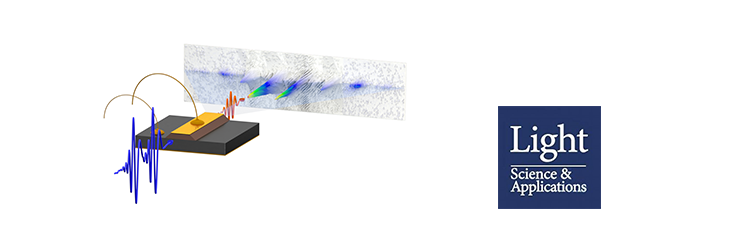The exploitation of ultrafast electron dynamics in quantum cascade lasers (QCLs) holds enormous potential for intense, compact mode-locked terahertz (THz) sources, squeezed THz light, frequency mixers, and comb-based metrology systems. Yet the important sub-cycle dynamics have been notoriously difficult to access in operational THz QCLs. In a new paper published in Light: Science & Applications, a team of scientists from Germany, France, UK and Sweden has revealed wave-mixing processes where intense terahertz waveforms interact inside the operating QCL to highlight extremely strong nonlinearities of the laser transition. Here, not only two, but four, six, and up to eight terahertz photons interacted nonlinearly. The data also provide information on the internal electron dynamics of the laser on the time scale of femtoseconds, including the recovery of the excited electron population after a strong nonlinear radiation burst. This is a particularly important parameter needed to construct QCLs that generate ultimately short terahertz pulses.
Terahertz-rate nonlinear switching may help to dramatically extend the reach of terahertz photonics, boost the speed of telecommunications links, and find applications in chemical analysis, medicine and diagnostics. Using the QCL itself as the nonlinear medium also resolves another long-standing problem: Resonant enhancement of nonlinearities is usually accompanied by absorption losses. In contrast, the active laser medium provides giant enhancement of nonlinearities combined with gain, i.e., negative absorption. This setting should foster yet higher-order nonlinearities. After all, eight interacting photons might not be the end of the line yet.

THz QCL as a nonlinear mixer, where multiple photons interact within the laser cavity to generate harmonics.
More:
Riepl, J., Raab, J., Abajyan, P. et al. Field-resolved high-order sub-cycle nonlinearities in a terahertz semiconductor laser. Light Sci Appl 10, 246 (2021).
https://doi.org/10.1038/s41377-021-00685-5
Author affiliation:
Laboratoire de physique de L’École normale supérieure (LPENS, ENS Paris/CNRS/Sorbonne Université/Université de Paris)
Corresponding author: Sukhdeep Dhillon
Communication contact: L’équipe de communication











